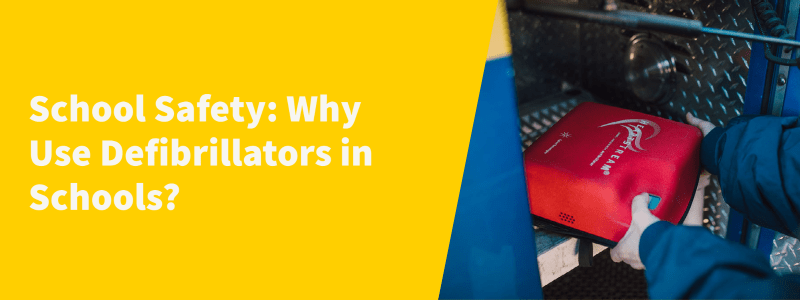Health and safety in a school setting is important for several reasons. Working in any space with young and potentially vulnerable people requires the right level of safety assurances should they need medical attention. This is why we should try and ensure defibrillators in schools become commonplace.
Defibrillators have recently become a much sought-after piece of equipment due to a few incidents that have shone a light on how common cardiac arrest cases really are. This, and a number of charities and campaigns have made people more aware of the dangers of heart-related health problems.
Ensuring your school has a defibrillator could be the difference between life and death. After every minute that passes, the chances of a person suffering a cardiac arrest surviving reduces by 10%. Quick access to an AED is imperative to help save a life.
How Will I Know When to use an AED on a Child?
Using an AED on a child is largely the same as using it on an adult: if they collapse with no prior complaint, and their breathing and pulse aren’t present, this is a sign of a cardiac arrest. While people will often have short gasps when collapsed, they won’t properly be breathing, and their heart will have stopped. At any of these signs, it is key to their recovery to administer CPR and use the defibrillator quickly. For help, an AED will always have a voice prompt instructing the user on what to do.
What is the Difference Between Using on Adult and Children?
This is something that worries people when using an AED on a child. But there really isn’t much difference between resuscitating an adult and a child. If someone suffers a cardiac arrest the only way to help them survive is to use a defibrillator machine. In case of use on children, many machines have child-friendly options, which will instruct you on where to put the defibrillator pads on their body.
There is a difference in administering CPR when doing so to infants.
For infants, you must place two fingers on the centre of their chest, compressing firmly at 100-120 beats per minute. Once you’ve done this, remove your fingers completely, letting the chest to expand and allowing the oxygen to circulate the body. If you feel suitably comfortable, you can also offer mouth-to-mouth oxygen assistance too.
Why use Defibrillators in Schools?
There are a few reasons to have a defibrillator in your school. These are:
- To help save a life.
- For local community use. The quicker the defib is used, the better.
- To inspire parent/guardian confidence.
- For teacher training and knowledge purposes.
- Because it’s your responsibility.
What are Some Other Resources our School can Use?
Info on how to conduct CPR – https://www.resus.org.uk/public-resource/how-do-cpr
How to use your defibrillator – https://www.sja.org.uk/get-advice/first-aid-advice/how-to/how-to-use-a-defibrillator/
The the full Direct365 Defibrillators & AEDs stock, or call our support team.
Defibrillators, although not a legal requirement, are becoming more popular. To help save a life, we advise every organisation should have one. For more information on your options, contact us today on 0333 060 2599.
Back
